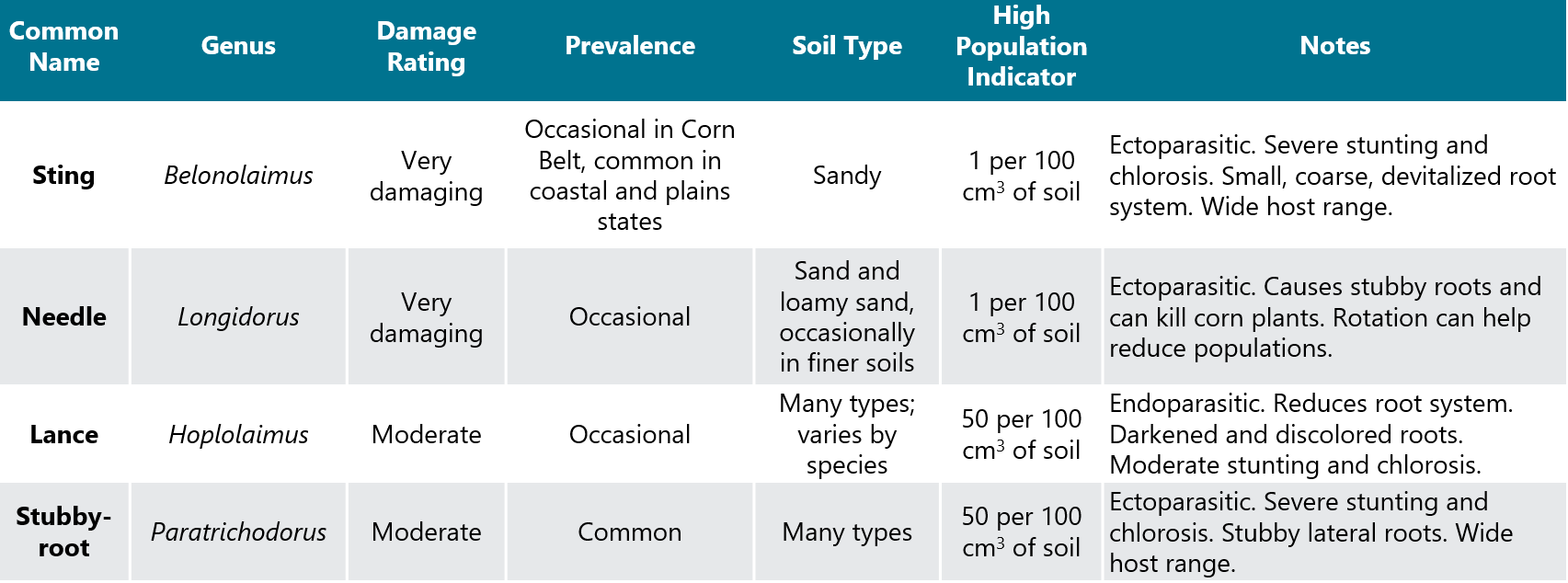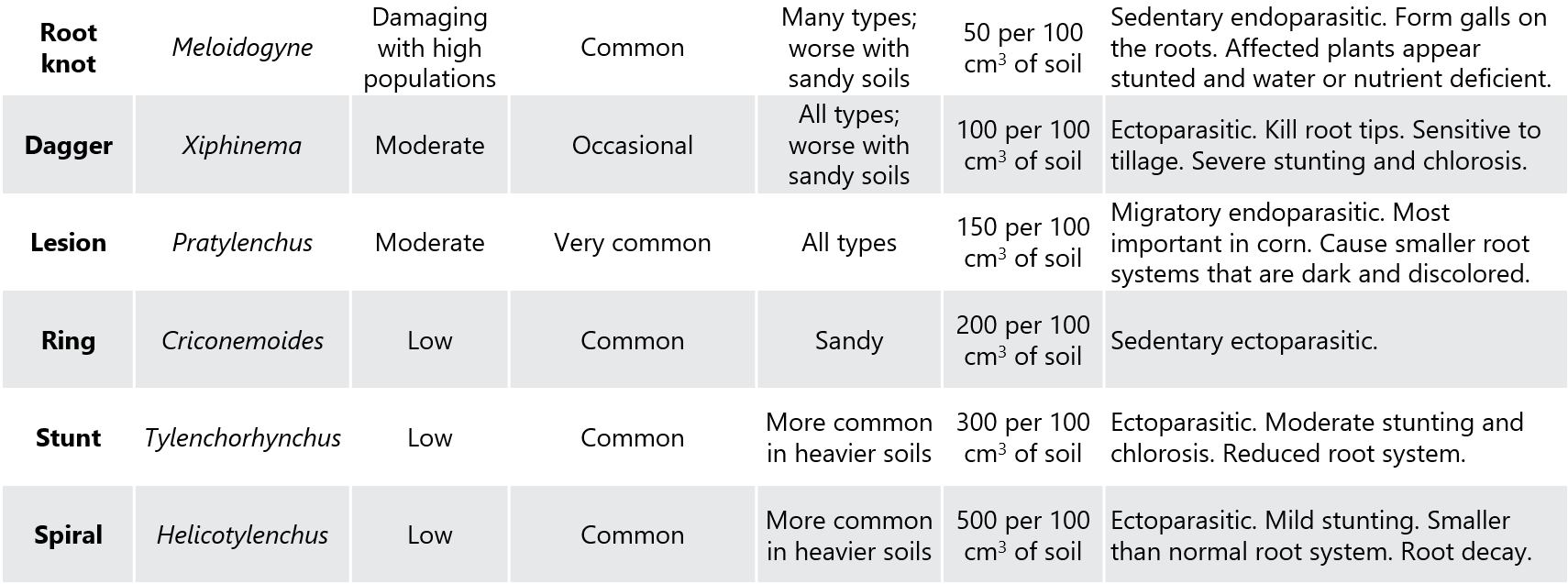Corn Nematodes: Symptoms, Damage and Control
Written by Mark Jeschke
Written by Mark Jeschke
Table 1. Corn nematodes of economic importance in North American corn production.



6:11
While soybean cyst nematodes are what most farmers are familiar with, corn nematodes are an equally dangerous species that can limit your corn’s yield potential. In this video, Pioneer Field Agronomist Matthew Montgomery shows you how to sample your

*Data is based on 10-state broad-acre head-to-head strip trial comparing Lumialza™ nematicide seed treatment vs. non-nematicide seed treatment utilizing the same insecticide and fungicide recipe in seed-applied technology replicated and strip trial data. Yields ranged from 3 to 9 bu/A depending on nematode species and population, in 184 low stress and 54 moderate to high stress locations.
The foregoing is provided for informational use only. Please contact your Pioneer sales professional for information and suggestions specific to your operation. Product performance is variable and depends on many factors such as moisture and heat stress, soil type, management practices and environmental stress as well as disease and pest pressures. Individual results may vary. Pioneer® brand products are provided subject to the terms and conditions of purchase which are part of the labeling and purchase documents.